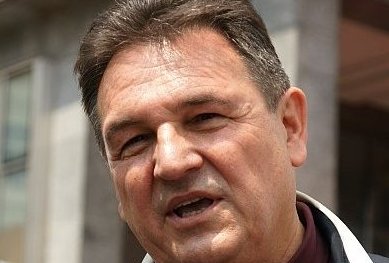
“Breakthrough of Putin’s Energy Empire” in Croatia?
Publication: Eurasia Daily Monitor Volume: 9 Issue: 64
By:

Croatia’s First Deputy Prime Minister and Economy Minister, Radimir Cacic, held talks with the Russian government and companies in Moscow on March 25-26, soliciting sweeping Russian investments in Croatia (“Breakthrough of ‘Putin’s empire’ in Croatia?” Vecernji List, March 28).
The initiative originates this time in Zagreb, from Croatia’s new coalition government; not from Russia as was the case until now. Cacic brought his proposals to Russia’s Energy Minister Sergei Shmatko, Emergency Situations Minister Sergei Shoigu (Russian co-chair of the Russia-Croatia and Russia-Serbia inter-governmental cooperation commissions), and managements of major Russian companies (Poslovni Dnevnik, Jutarnji List, Business.Hr, March 27-29).
The proposals include:
1.) Routing Gazprom’s South Stream gas pipeline through Croatia. The government (assuming that Cacic spoke for the coalition) is keen to have a section of the transit pipeline built in Croatia. But it would apparently be content with a mere spur from the transit pipeline (second-best option, turning Croatia into a mere importer, rather than a transit country), and would apparently even forgo the construction of a new pipeline by Gazprom, instead making available Croatia’s existing pipelines for Gazprom’s use in the framework of South Stream (third and poorest option). The Croatian side solicits Moscow’s answer to the feasibility study, drafted by the national gas transportation company Plinacro in 2010. The Russians replied that “Russia will make a decision and Croatia will then be informed,” according to Cacic (HINA, March 26).
Some Croatian experts correctly note that Russia is committed [at least on paper] to routing South Stream through Serbia and the latter’s Banatski Dvor storage site (Gazprom-Serbian joint venture). This would practically rule out transit through Croatia, allowing only a spur into Croatia from the transit pipeline’s Serbian section. Even Gazprom has stopped encouraging hopes for a Croatian “gas hub.” Meanwhile, the Croatian government does not seem to question whether Russia has the gas volumes and financing available for South Stream (it has neither).
2.) Adria-Druzhba Oil Pipeline Reverse-Use. This would see Croatia’s state-owned Adria oil pipeline being used north-south, for Russian oil exports from the Druzhba pipeline to Croatia’s Adriatic supertanker port Omisalj, instead of south-north, for Middle Eastern oil from Omisalj to Central Europe. Reverse-use could block Central Europe’s free access to non-Russian oil. Reverse-use is a 15-year old Russian proposal, turned down by Croatia in 2005 on environmental grounds, discussed intermittently since then, and raised again by Cacic in Moscow.
This proposal seems unworkable now for a different set of reasons. The Russian government is capping oil production and exports while re-directing substantial flows from the Druzhba pipeline to the Baltic and other export routes. Thus, the volumes are lacking for reverse-use of the Adria-Druzhba pipeline. With the Druzhba oil flow declining from year to year, Croatia can transit growing oil volumes northward to Central Europe, instead of attempting in vain to resurrect a Russian proposal detrimental to Central Europe.
3.) Oil product pipeline Bosanski Brod-Slavonski Brod-Zagreb-Omisalj, with export terminal and storage in that Adriatic port. Cacic proposed building an oil product pipeline (mainly for gasoline and diesel fuel) for the use of Russian state company Zarubezhneft, owner of the Bosanski Brod refinery in Bosnia’s Serb Republic. The line would run via Croatia to Omisalj and the dedicated installations to be built there. The Croatian side hopes that this project would create a “regional spot market” for oil products in Omisalj. This proposal grows out of Zarubezhneft’s earlier proposals to build such a pipeline as a Russian-Croatian joint venture, potentially involving also GazpromNeft’s two refineries in Serbia (see EDM, January 30).
In the current version, amended in Zagreb, the construction would be a joint undertaking but the ownership would be Croatian, with Russian companies simply contracting for the use of pipeline and terminal capacities. Whether Russian companies would consent to invest in the construction project without demanding part-ownership, is far from certain. Additionally, state-owned Zarubezhneft recently proposed to buy Austrian OMV’s network of fuel stations in Croatia and Bosnia-Herzegovina. With this, Russian state oil interests would be moving into the core market of Croatian INA (in which Hungarian MOL is the leading shareholder).
4.) Exploration drilling for oil and gas in Croatia. This would involve approximately ten sites, onshore in the Slavonia region and offshore on the Adriatic shelf. If successful, exploration would be followed by production contracts. Russian companies are “welcome to compete in open international tenders.” However, INA (reformed into a modern company by MOL) also plans to participate in the tender.
5.) Thermal Power Plants. Cacic asked for Russian financing to help build or complete new thermal power stations in Plomin, Sisak and Slavonski Brod.
6.) Petrochemical Industry. Russian Gazprom’s petrochemicals subsidiary, Sibur Neftekhim, is interested in acquiring part-ownership of Croatian Petrokemija, a big export-oriented producer of fertilizers. Petrokemija is 51 percent state-owned. Selling state-owned shares would be politically difficult, but Sibur could start by going after free-float shares.
7.) Banking. Russia’s Sberbank is interested in acquiring Croatia’s Post Bank. This is Sberbank’s second Croatian target. Last year, Sberbank acquired Austrian Volksbank with the latter’s subsidiary in Croatia.
8.) “Fire-Fighting Center.” Acting in his dual capacity (see above), Shoigu proposed setting up a “Fire-Fighting Center” in Croatia. His Emergency Situations Ministry (a fully militarized institution) has already established a disaster-response center at Nis airport in Serbia, creating in all but name a Russian military toehold there. In Croatia’s case, Shoigu proposes a “European” Fire-Fighting Center with his Ministry’s participation.
Three aspects stand out in Cacic’s Moscow visit. First, for all his high governmental rank, it seems far from clear whether Cacic had full governmental backing. His People’s Party-Liberal Democrats is a junior partner in the tripartite coalition government; and Cacic’s accompanying delegation was unrepresentative in its composition. Prime Minister Zoran Milanovic and other ministers have yet to comment on those sweeping investment proposals. Second (judging from the press accounts), the Croatian side appeared as a supplicant, eager for a Russian investment bonanza in the energy sector, thus handing leverage to the Russians. And third, while the Croatian side initiated discussions on energy, the Russians displayed more interest in entering Croatia’s non-energy sectors, at least at the present stage of bargaining.




